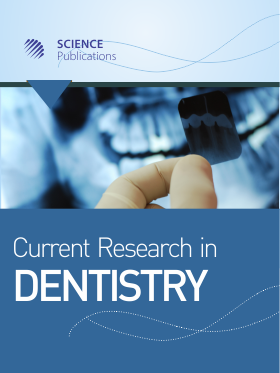Microleakage Assessment of CAD/CAM Endo Crown Restorations (an in vitro Study)
- 1 Department of Operative Dentistry, Al Azhar University, Egypt
- 2 Department of Prosthodontic Dentistry, Al Azhar University, Egypt
Abstract
The preservation of tooth structure is an important factor in the successful restoration of endodontically treated teeth. The loss of structural integrity increases the occurrence of crown fractures and microleakage at the margins of restorations in endodontically treated teeth compared with vital teeth. A total of twenty endocrowns were fabricated in this study and the endocrown was divided into two main groups. Each subgroup was tested after cementation for (marginal gap and fracture strength). To simulate a frequent clinical situation then accept a different type of end crown restoration (IPS E-max cad, IPS E-max press). IPS E-max comprises highly esthetic, high strength materials for both the press and CAD/CAM technology subgroup recorded statistically significant (p<0.05) highest marginal gap mean value (54.85±2.5 μm) followed by O group P subgroup (52.00±4.3 μm) then N group P subgroup (49.47±1.3 μm). CAD/CAM endocrown restoration is better in marginal fit. Microleakage is directly affected by the type of cement of CAD/CAM endocrown. Ceramic endocrown is considered a recent approach in the treatment of endodontically treated teeth with the advantage of the reduction in the amount of loss of tooth structure in comparison to the classical crown with post and core.
DOI: https://doi.org/10.3844/crdsp.2023.1.7

- 1,954 Views
- 1,224 Downloads
- 0 Citations
Download
Keywords
- Ceramic Endocrown
- CAD/CAM Endocrown
- Fracture Resistance
